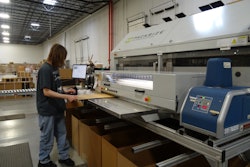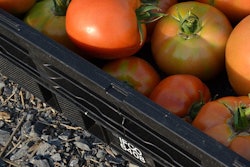
As a naïve child, I believed this was because there was not sufficient food to feed the world’s exploding population. I thought that there were not enough appropriate places to grow enough food.
And 40 years later, when I speak to school children, I become aware that they still think as I did at the same age—there is not enough food to go around. This is a myth we have to dispel. When I became aware 30 years ago that a third of the world’s food production goes to waste—today, that equates to 1.3 billion tons per year—I made it my life’s ambition to try and do something about this unacceptable problem. I left the pharmaceutical industry and retrained in the packaging field because I felt determined that in the packaging of food lay a solution to getting food to more people before it was wasted.
Packaging alone cannot fix this problem of food waste. However, it can make a significant difference in how much more food gets to the hungry. Before we consider any package design, packaging material, innovative products, technological advancements, or other factors, we must understand and appreciate where we fit in the chain that could get more food to more people.
People who go hungry for too long must become creative to survive. I am always intrigued by the packaging of goods in small markets when I travel in developing countries. These people cannot afford to buy in bulk, and so they create clever packaging for small, daily portions. For them, however, it remains a challenge to keep food fresh, even for a day. These are the skills we can teach in schools—not only how to pack food to keep it fresh longer, but how to preserve food so it can be packed to stay fresh longer.
Packaging is but a part of the whole chain in reducing food waste, but many organisations need our expertise in getting more food to more of the people who need it most. Cutting food loss and waste in half will require experience and expertise to ensure the food stays fresh, safe, and profitable, and that the pack carrying it is sustainable, reusable, and efficient through the supply chain in its quality, protection, and all-around efficacy.
I know that for many packaging professionals, the shift in focus to designing packaging to reduce food waste might require a big mind shift. As a packaging consultant, I am amazed at how many people have the product to be packed fully designed before approaching me to help them with their packaging, as it can be very costly. In all the education programs offered by the World Packaging Organisation (WPO), huge emphasis is placed on designing with the end in mind.
Efficient, effective package design requires that the package be considered early in the product’s development cycle. So reducing food waste through packaging requires consideration of the whole chain before we envisage the product in the pack. Our waste reduction plan should measure the shelf life that this product will need to have, the package conditions where this product will be packed, the format of the pack for accessibility and reusability by consumer, and the air freight, shipping container, or pallet dimensions that will transport this product.
Education needs to begin at a very early age to bring greater awareness to the fact that we can reduce food waste and thereby reduce global poverty. The WPO places a major emphasis on the importance of packaging education and all the elements that are attached to creating an effective pack.
Over the past four years, WPO has brought packaging technology education to more than 1,400 people in 32 countries through 41 training programs. During the coming year, more countries will join the growing list, including Kazakhstan, Morocco, Lebanon, and Egypt. There are thousands of employees around the world who are responsible for packaging but have no packaging training at all. Packing food is a science. Are you equipped to create packaging that will work toward reducing global food waste? Do not go it alone. The responsibility is huge.

























